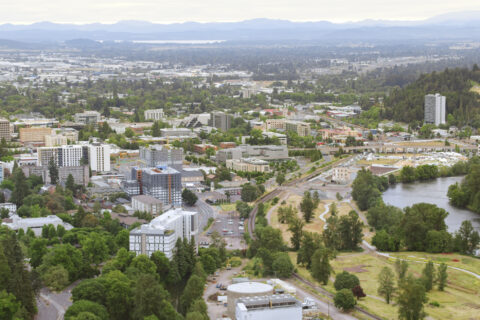This case study is part of the Reimagining Public Safety Impact Updates Resource, which highlights successful programs in cities, towns and villages across the country. View the Reimagining Public Safety Initiative to learn more about NLC’s work in creating safe, equitable communities for all. This is one of four municipalities illustrating the Community Response Model, which relies on trained, unarmed civilians to respond to crises and provide behavioral health services.
Albuquerque, NM (pop. 564,559): Albuquerque Community Safety (ACS) Department
The Albuquerque Community Safety (ACS) Department, an independent cabinet-level department within the city, has taken an assertive but sustainable growth approach to meeting the demand for alternative response. The department launched in 2021 and began providing 24/7 coverage in August 2023. ACS continues to identify and fill gaps in the local continuum of care, expanding its programming to include violence intervention, care navigation, and hospital-partnered street medicine.
As of April 2024, ACS has responded to 68,000 calls since September 2021. ACS currently diverts 5 percent of police department calls and responds to over 3,000 calls per month.
The ACS budget has continuously increased over several years, reflecting the department’s capacity to respond to public calls for service. ACS’s general fund budget for FY2021 was $2.5 million, FY2022 was $7.7 million for 61 positions, FY2023 was $11.8 million for 133 full-time positions, and in FY2024 the budget increased to $17 million. A general obligation bond also primarily funded the construction of an ACS headquarters, which opened in April 2024. Since ACS is a city department, funding comes directly from the city budget and is augmented by grants.
Separate programs within the department cover co-response with law enforcement to high-acuity mental health calls, alternative response to mid-acuity behavioral health issues, community response to non-law enforcement issues, street outreach, care navigation, violence intervention, opioid education, and community healing to traumatic events.
Key performance metrics collected include:
- Call volume
- Calls by referral source
- Number of cross-departmental referrals
- Response time
- Response outcome
- Number of transports
- Percentage of calls involving co-response with law enforcement
- Percentage of calls involving a person experiencing homelessness
- Number of repeated calls for the same individual or location
- Number of coordinated responses, events, and outreach with internal and external partners
Acknowledgements for contributions and review from Jodie Esquibel, Acting Director for Albuquerque Community Safety, City of Albuquerque.
View the Reimagining Public Safety Impact Update
Learn more about what different cities have done to support public safety, including qualitative and quantitative measures highlighting the impact of community responder models, group violence interventions, hospital-based violence interventions and community violence interventions.



